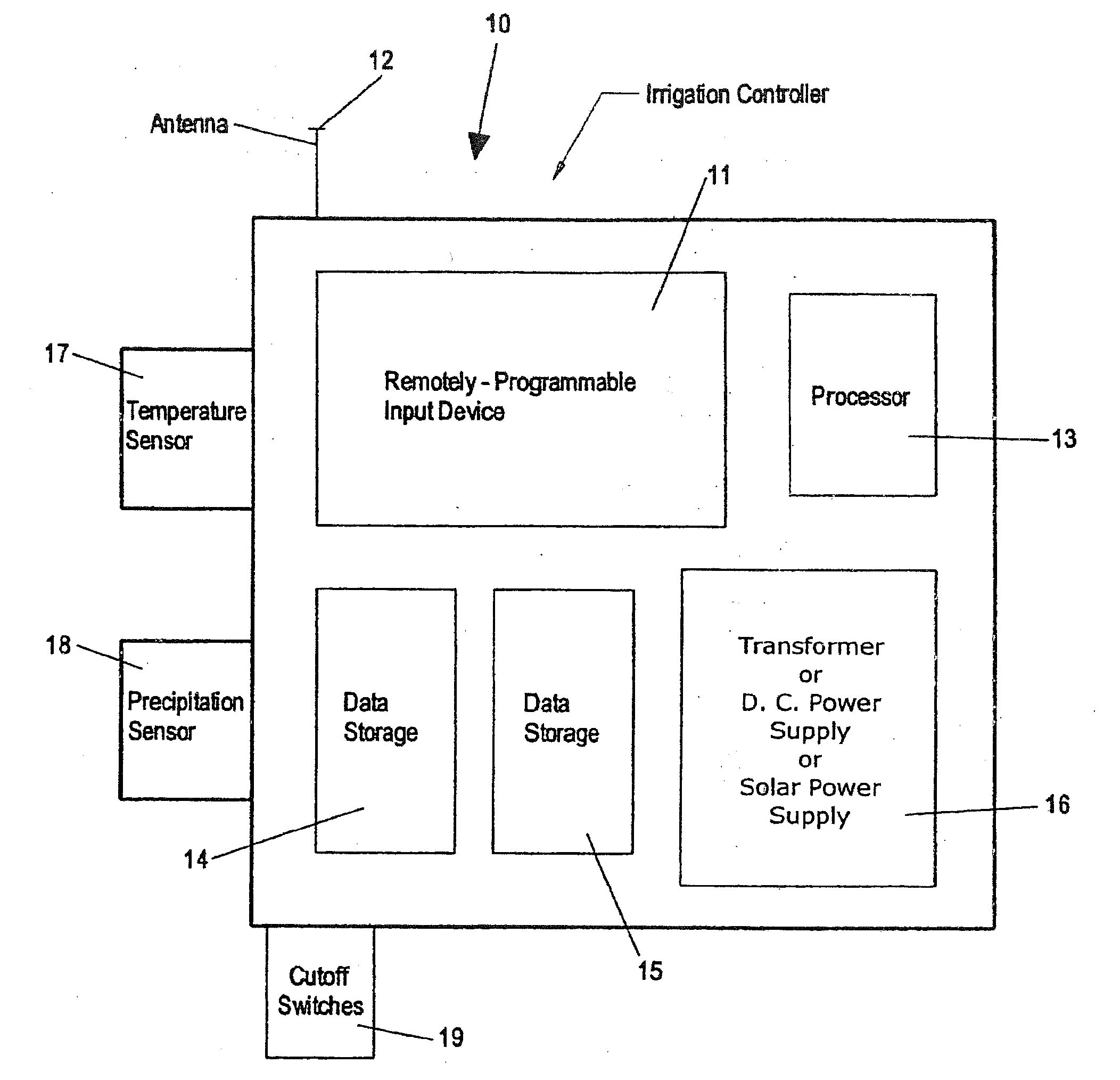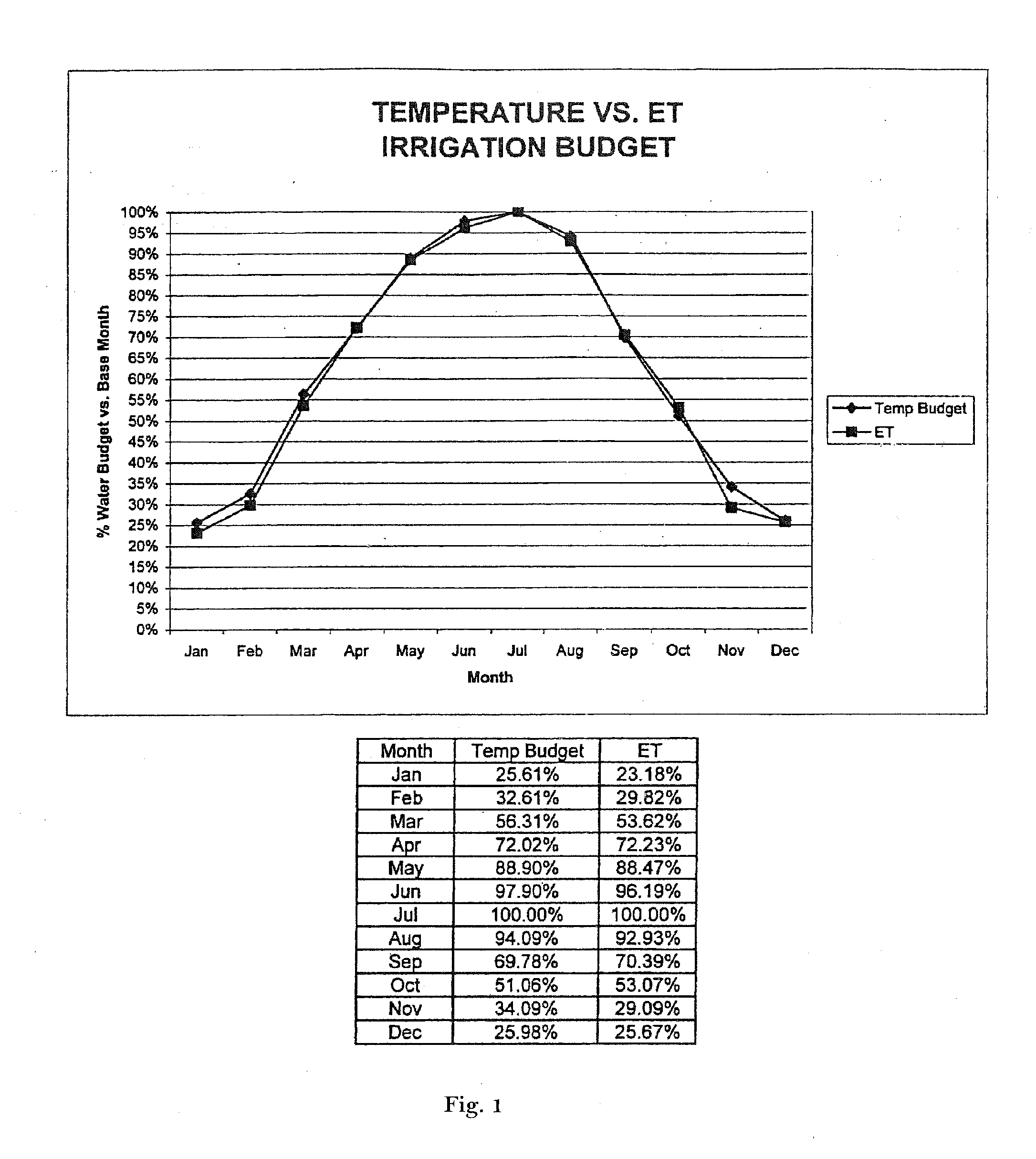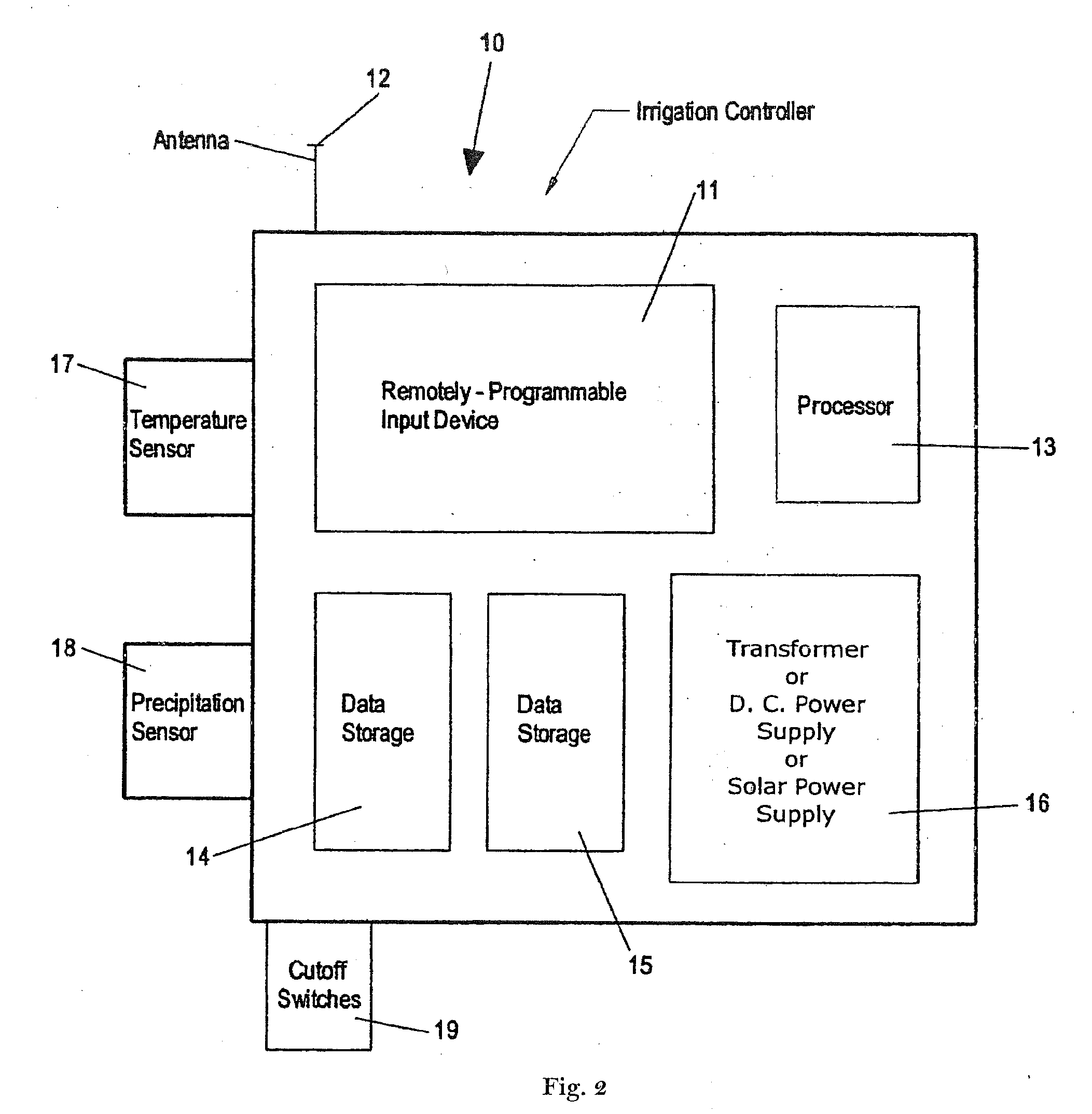Irrigation controller water management with temperature budgeting
a controller and temperature budgeting technology, applied in the field of management and conservation of irrigation water, can solve the problems of controller inefficiency, projected shortage, lack of sufficient water resources, etc., and achieve the effects of reducing runoff, facilitating installation, operation and maintenance, and being easy and less expensiv
- Summary
- Abstract
- Description
- Claims
- Application Information
AI Technical Summary
Benefits of technology
Problems solved by technology
Method used
Image
Examples
Embodiment Construction
[0091]FIG. 1 compares the monthly ET values obtained using the Penman-Monteith formula (currently favored by the USFAO and CIMIS) with the ratios obtained utilizing the formula of the preferred embodiment described herein. Such comparison was made over a period of five years at twenty-five environmentally-diverse locations within the State of California. Both formulas used the same CIMIS data. For the Penman-Monteith formula, the published historical monthly ETo was divided by the historical summer ETo. The monthly temperature budget factors obtained by the present invention were similarly divided by the summer temperature factor. The ETo ratio is then compared to the WBR for relative accuracy. As indicated by FIG. 1, the values obtained using the formula herein closely approximate the Penman-Monteith, generally more so than the other ET formulas. This indicates that the present invention is superior to the other ET formulas, since a simple to understand method that is ninety-five p...
PUM
 Login to View More
Login to View More Abstract
Description
Claims
Application Information
 Login to View More
Login to View More - R&D
- Intellectual Property
- Life Sciences
- Materials
- Tech Scout
- Unparalleled Data Quality
- Higher Quality Content
- 60% Fewer Hallucinations
Browse by: Latest US Patents, China's latest patents, Technical Efficacy Thesaurus, Application Domain, Technology Topic, Popular Technical Reports.
© 2025 PatSnap. All rights reserved.Legal|Privacy policy|Modern Slavery Act Transparency Statement|Sitemap|About US| Contact US: help@patsnap.com



